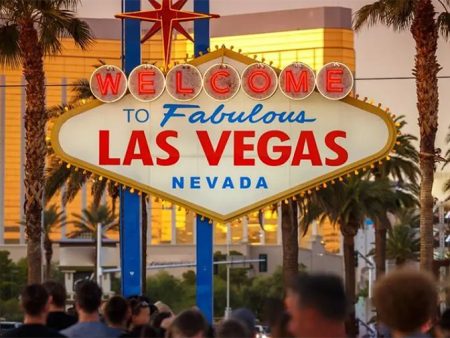According to the Las Vegas Convention and Visitors Authority, the Super Bowl in February and Formula One race in November generated more than $1.1 billion in Las Vegas visitor spending that led to an economic impact of more than $1.8 billion.
The economic return on the two high-profile events was announced this week as the LVCVA released its annual Economic Impact of Southern Nevada Tourism Industry report from research firm Applied Analysis.
The LVCVA Board of Directors also approved an agreement that keeps the National Finals Rodeo through 2035. The LVCVA will pay $33 million from 2025 to 2035 to host the event every December. The event occurs during what would be otherwise a slow month during tourism season.
LVCVA CEO Steve Hill reiterated this week what he has previously said: The Monorail will continue operating, despite the ongoing construction of the subterranean Las Vegas Loop transportation system.
The 29-year-old Monorail was purchased by the LVCVA in 2020 for $24 million. Its longevity depends on the life of the trains, which aren’t replaceable. The elevated right of way would be used for some sort of transportation and maybe include the existing loop system, Hill said.
Applied Analysis Principal Jeremy Aguero said F1 generated $500.6 million in net visitor spending with a total economic impact of $884.5 million. Including the economic impact from FI operations and capital, the total was $1.5 billion.
The Super Bowl generated $606.3 million in net visitor spending, while the total economic impact of visitor spending was $1 billion, Aguero said.
In the Applied Analysis report, southern Nevada’s tourism industry has exceeded pre-pandemic marks for many indicators, setting new highs in spending and gaming revenue, while visitation continues to recover.
Monthly visitation through 2023 never dipped below three million visitors, with a peak of 3.6 million in March. Visitation increased by 5.2 percent on the year to 40.8 million, exceeding 40 million for the first time since 2019.
“Visitor spending hit an all-time high for the second consecutive year, totaling $51.5 billion,” the report said. “Total spending by visitors grew by 14.7% compared to 2022. Despite falling 1.7 million visitors short of the 2019 visitation total, aggregate visitor spending in 2023 increased dramatically due to a 45.5% rise in per-visitor spending compared to four years earlier.”
On a per-visitor basis, the report said spending climbed to a record $1,261 in 2023, 9.1% higher than in 2022. Visitor spending increased for most categories. The most significant increase among categories was in shopping. In 2023, the total economic output related to visitor spending (including direct, indirect, and induced impacts) rose 7.4 percent to $85.2 billion, surpassing the all-time high set in 2022.
Southern Nevada’s tourism industry remained the largest employer in the region, directly employing an estimated 248,520 workers. With indirect and induced impacts included, total employment impacts climbed to an estimated 379,630, a 5.8% increase from the prior year.
Southern Nevada’s tourism industry supported $13.8 billion in direct wages, 20.7% of all wages in the region. The additional indirect and induced impacts supported wages for workers in many sectors of the economy, with a total wage impact of $21.2 billion, or 31.7% of all regional wages.
Convention attendance climbed to six million in 2023, a 19.9% annual increase. Convention visitors spent $1,520 per trip, about 25 percent higher than the average leisure visitor. Convention visitors collectively spent $9.1 billion, directly supporting an estimated 43,910 jobs and $2.4 billion in wages. When the indirect and induced impacts of convention visitor spending are included, the convention sector supported an estimated 67,080 jobs, $3.7 billion in wages, and $15.1 billion in overall economic output.
The Las Vegas Convention Center hosted about one-fifth of regional convention attendees in 2023. Those attendees spent $1.8 billion, which directly supported 8,700 jobs and $484.8 million in wages. When the indirect and induced impacts are included, those totals rise to 13,290 jobs, $741.7 million in wages and $3 billion in economic output, the report said.













